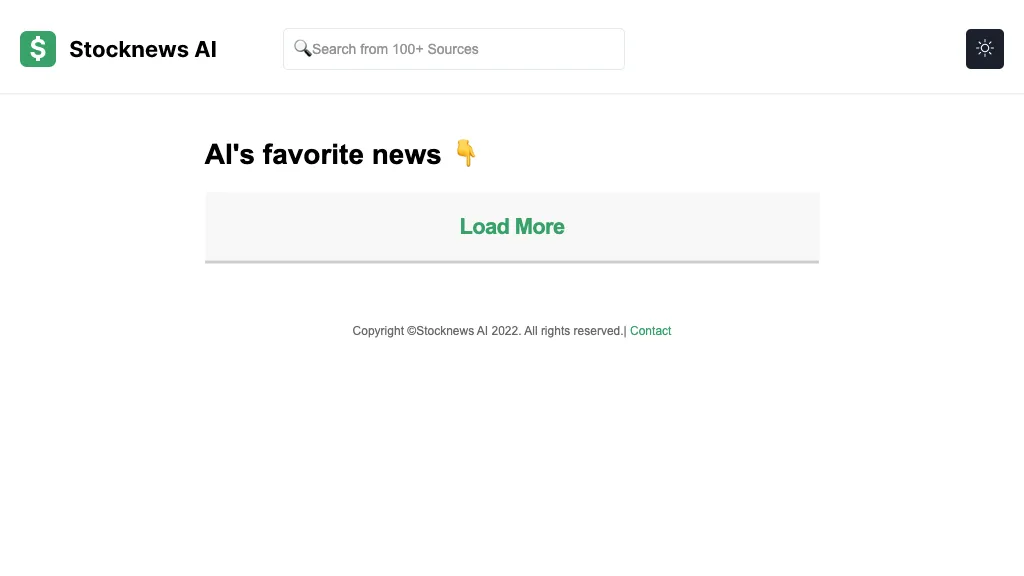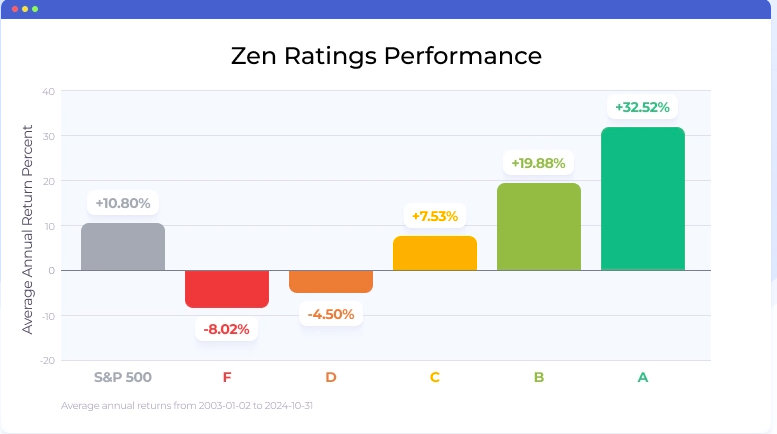Top 10 Tips On Assessing The Ai And Machine Learning Models Of Ai Stock Predicting/Analyzing Trading Platforms
To get precise, reliable and useful insights, you need to test the AI models and machine learning (ML). Incorrectly designed or overhyped model can lead financial losses and incorrect forecasts. Here are ten of the best tips to help you evaluate the AI/ML models of these platforms.
1. Learn about the purpose of the model and the way to apply it.
The goal must be determined. Make sure the model has been developed to be used for long-term investment or short-term trading.
Algorithm transparence: Check whether the platform discloses types of algorithms used (e.g. Regression, Decision Trees Neural Networks and Reinforcement Learning).
Customizability: Find out if the model can adapt to your specific trading strategy or your tolerance to risk.
2. Review model performance by analyzing the metrics
Accuracy Check the model's predictive accuracy. Don't solely rely on this measurement, however, because it can be inaccurate.
Precision and recall: Evaluate how well the model can identify true positives (e.g. accurately forecasted price movements) and eliminates false positives.
Risk-adjusted returns: Find out whether the model's forecasts will lead to profitable trades, after accounting for risks (e.g. Sharpe ratio, Sortino coefficient).
3. Test the model by Backtesting
Backtesting the model by using previous data lets you test its performance against prior market conditions.
Testing using data that isn't the sample is important to avoid overfitting.
Scenario analysis: Test the model's performance in different market conditions (e.g. bear markets, bull markets high volatility).
4. Make sure you check for overfitting
Overfitting: Be aware of models that perform well with training data but do not perform well with data that has not been observed.
Methods for regularization: Make sure that the platform does not overfit when using regularization methods such as L1/L2 and dropout.
Cross-validation: Make sure that the platform employs cross-validation in order to determine the generalizability of the model.
5. Assess Feature Engineering
Relevant features: Make sure the model uses meaningful features, such as price, volume or technical indicators. Also, check the sentiment data as well as macroeconomic factors.
Selection of features: You must ensure that the platform is choosing features with statistical significance and avoiding redundant or unnecessary information.
Updates to features that are dynamic: Check if the model can adapt to changes in market conditions or to new features as time passes.
6. Evaluate Model Explainability
Interpretability (clarity) It is important to check whether the model can explain its predictions clearly (e.g. value of SHAP or the importance of features).
Black-box models cannot be explained Beware of systems using overly complex models including deep neural networks.
User-friendly Insights: Make sure that the platform provides useful information in a format that traders can easily understand and use.
7. Examining Model Adaptability
Market conditions change - Check that the model can be adapted to changes in market conditions.
Examine if your platform is updating its model regularly with new information. This can improve performance.
Feedback loops: Ensure that the platform is incorporating feedback from users or real-world results to help refine the model.
8. Examine for Bias and Fairness
Data biases: Make sure that the data for training are valid and free of biases.
Model bias: Ensure that the platform actively monitors model biases and reduces them.
Fairness. Make sure your model doesn't unfairly favor certain stocks, industries or trading strategies.
9. Evaluation of Computational Efficiency
Speed: Determine whether you are able to make predictions with the model in real-time.
Scalability Check the platform's capability to handle large amounts of data and multiple users with no performance loss.
Resource usage: Check to make sure your model has been optimized to use efficient computational resources (e.g. GPU/TPU utilization).
Review Transparency Accountability
Model documentation: Verify that the platform offers detailed documentation regarding the model design, the process of training and its limitations.
Third-party Audits: Determine if the model has been independently verified or audited by third parties.
Error handling: Verify if the platform has mechanisms to detect and correct model errors or failures.
Bonus Tips
Case studies and user reviews Review feedback from users to get a better idea of how the model works in real world situations.
Trial period: Try the model for free to test how accurate it is and how easy it is to utilize.
Support for customers: Make sure the platform provides a solid support for the model or technical issues.
These tips will assist you in assessing the AI models and ML models available on platforms that predict stocks. You'll be able to assess if they are transparent and trustworthy. They should also align with your goals for trading. Have a look at the top ai stocks for blog tips including chart ai trading assistant, chatgpt copyright, best ai trading software, best ai stock, ai investing platform, ai for stock predictions, ai investing platform, ai stock trading app, best ai trading app, ai for trading and more.

Top 10 Suggestions For Evaluating The Quality And Reliability Of Ai-Based Stock Trading Platforms
Scalability is an important factor in determining whether AI-driven platforms for stock prediction and trading can cope with growing demand from users, increasing data volumes and market complexity. Here are the top 10 suggestions for evaluating the scaleability.
1. Evaluate Data Handling Capacity
Tip: Check if the platform can process and analyze large datasets (e.g., historic stock data, live market feeds, or other data sources like news and social media).
Why is that? Scalable platforms must be able handle growing volume of data without performance reduction.
2. Test Real-Time Processor Capabilities
Find out how the platform handles real-time data streams, such as stock prices and breaking news.
The reason is that real-time trading decisions require real-time analysis of data. Delays can result in missed opportunities.
3. Check the Cloud Infrastructure for Elasticity
Tip: Find out whether the platform has the ability to dynamically scale resources and uses cloud infrastructure (e.g. AWS Cloud, Google Cloud, Azure).
Why? Cloud platforms allow flexibility. The system is able to scale up or reverse in accordance with the need.
4. Algorithm Efficiency
Tip : Check the computational effectiveness and accuracy of AI models to make predictions.
The reason is that complex algorithms are resource-intensive. So, optimizing them will assist you in scaling.
5. Find out more about Parallel Processing and Distributed Computer Systems.
TIP: Check if the platform is able to use distributed computing and parallel processing frameworks.
What are they: These technologies speed up data processing and analysis on many nodes.
Examine API Integration & Interoperability
Tips: Make sure to check the integration of the platform to external APIs.
What's the reason? Seamless integration with platforms makes sure it is able to adjust to new sources of data or trading environments.
7. Analyze User Load Handling
You can simulate user traffic and see how the platform responds.
What's the reason? A platform that can be scalable should maintain performance even as the number of users grows.
8. Assess the Retraining Model and its Adaptability
Tips Check how often the AI models are trained on new data.
The reason: Markets change, and models must adapt quickly to ensure precision.
9. Check for Fault tolerance and redundancy
Tips. Make sure your platform has failover systems and redundancy to handle hardware or software problems.
Why trading can be costly, so fault tolerance and scalability are crucial.
10. Monitor Cost Efficiency
TIP: Take into consideration the cost of scaling your platform. Consider cloud resources such as storage for data and computing power.
Why: Scalability should not be a burden that is unsustainable, so balancing performance and cost is crucial.
Bonus tip: Future-proofing
Make sure the platform can be able to adapt to changes in regulation and incorporates new technologies, such as quantum computing or advanced NLP.
It is possible to assess the efficacy and scalability of AI trading and stock prediction systems by paying attention to this particular aspect. This will ensure that they're efficient and robust, prepared for growth. Have a look at the top rated https://www.inciteai.com/learn-more for site info including ai in stock market, best stock prediction website, chart analysis ai, ai software stocks, ai tools for trading, ai for trading stocks, ai investment tools, chart analysis ai, trading ai tool, free ai stock picker and more.

Comments on “20 Free Info To Selecting AI Stock Investing Analysis Sites”